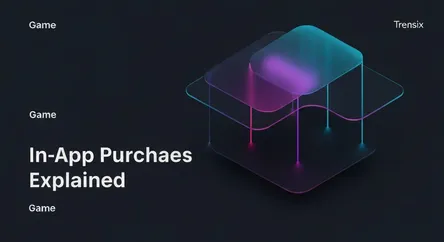Game
In-App Purchases Explained

Discover what in-app purchases are, why they dominate the gaming industry, and how this microtransaction model impacts players and game design.
What is it?
In-app purchases (IAPs), also known as microtransactions, are exchanges of real money for virtual goods or services within a game. Common examples include buying in-game currency, cosmetic items like character skins, power-ups, or unlocking new content. This model is the foundation of 'freemium' games, which are free to download and play but offer optional purchases to enhance or accelerate the player's experience. These purchases are handled directly through app stores like Google Play or the Apple App Store, making the process seamless.
Why is it trending?
The IAP model has exploded in popularity because it's incredibly profitable. By offering a game for free, developers can attract a massive audience without the barrier of an upfront cost. Revenue is then generated from a small percentage of dedicated players who choose to spend money. This creates a continuous income stream, unlike the one-time sale of a traditional game. This financial success, particularly in the mobile market, has pushed the majority of top-grossing games to adopt a freemium structure powered by in-app purchases.
How does it affect people?
For players, in-app purchases can be a double-edged sword. They offer flexibility, allowing users to customize their experience or save time. However, they can also lead to 'pay-to-win' scenarios, where spending money provides a significant competitive advantage, frustrating non-paying players. Furthermore, some game designs are criticized for being intentionally manipulative to encourage spending. Controversial IAPs like 'loot boxes' have drawn scrutiny from regulators worldwide for their resemblance to gambling, raising concerns about their impact on younger audiences and vulnerable individuals.